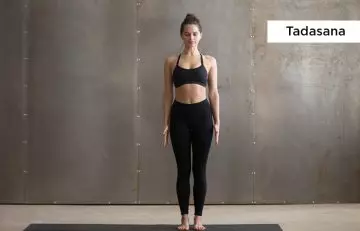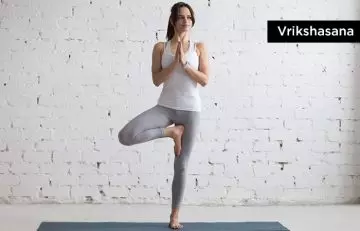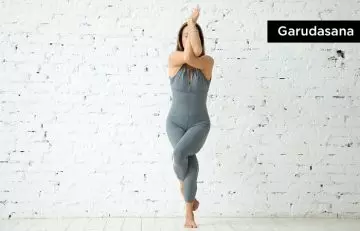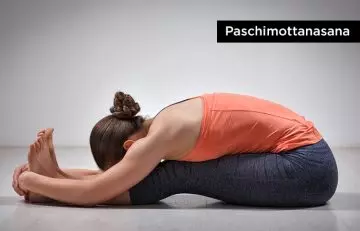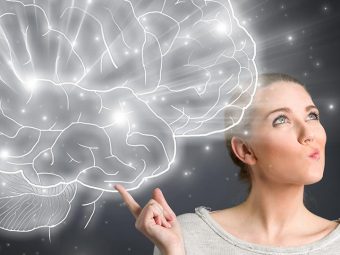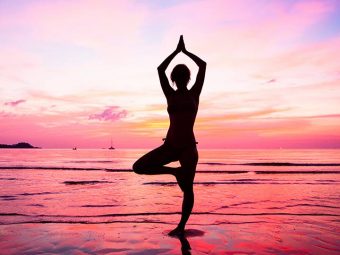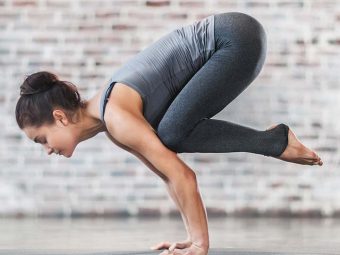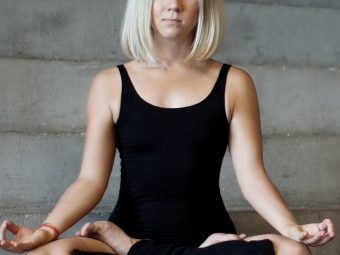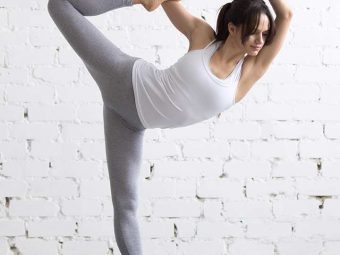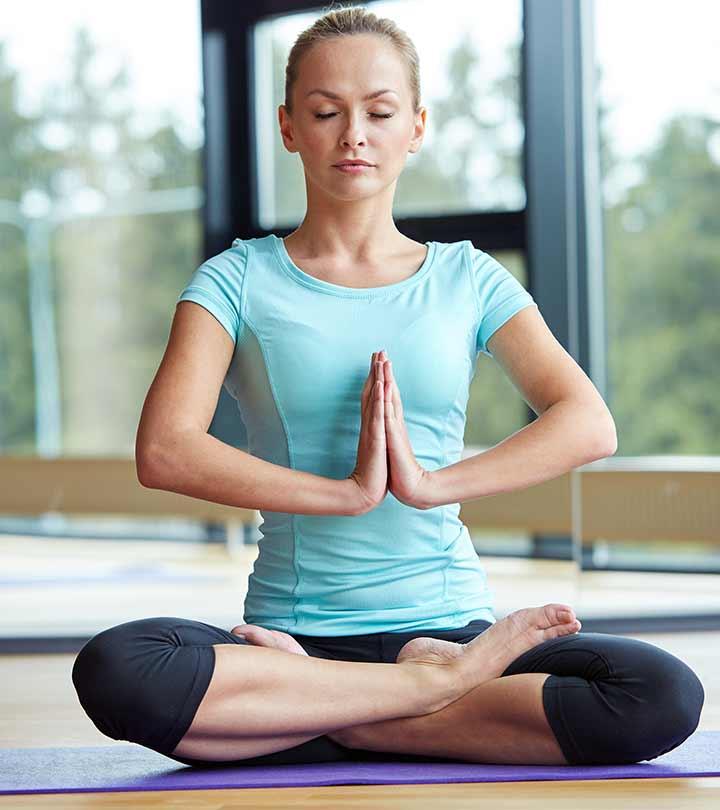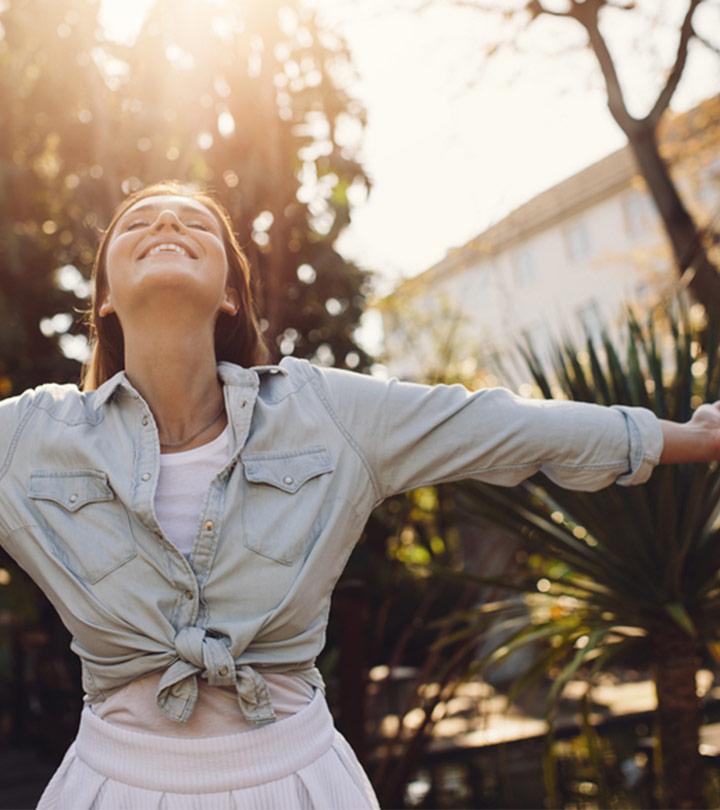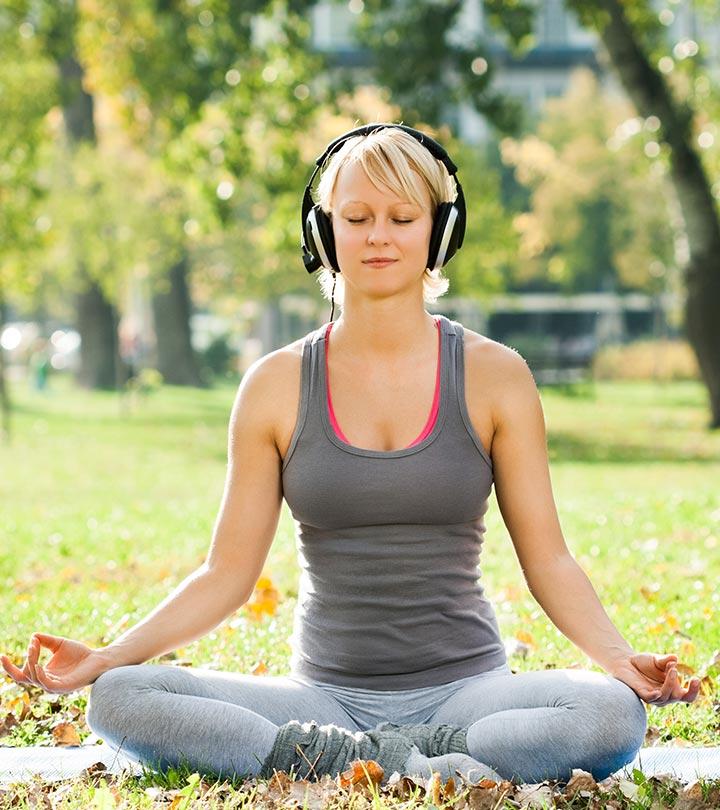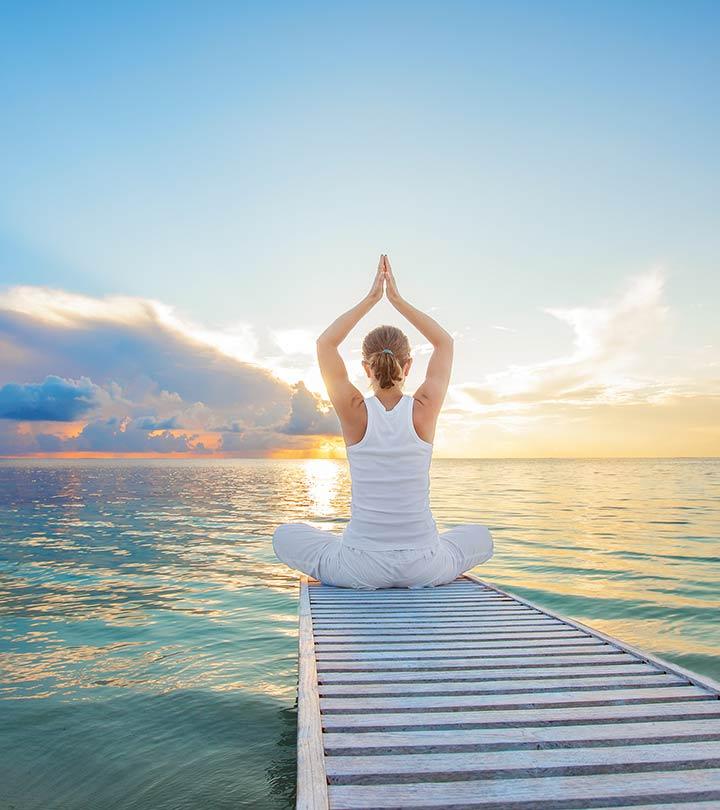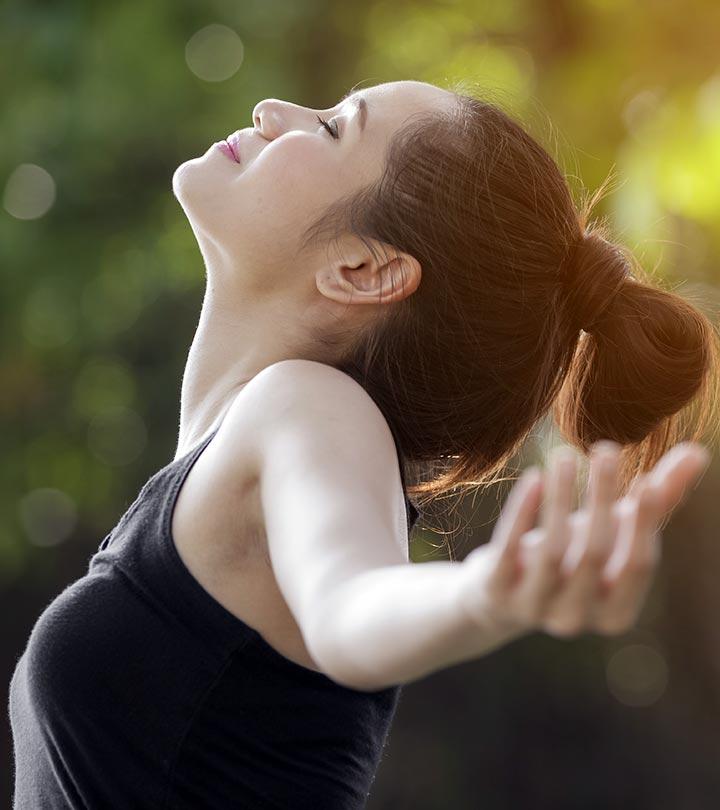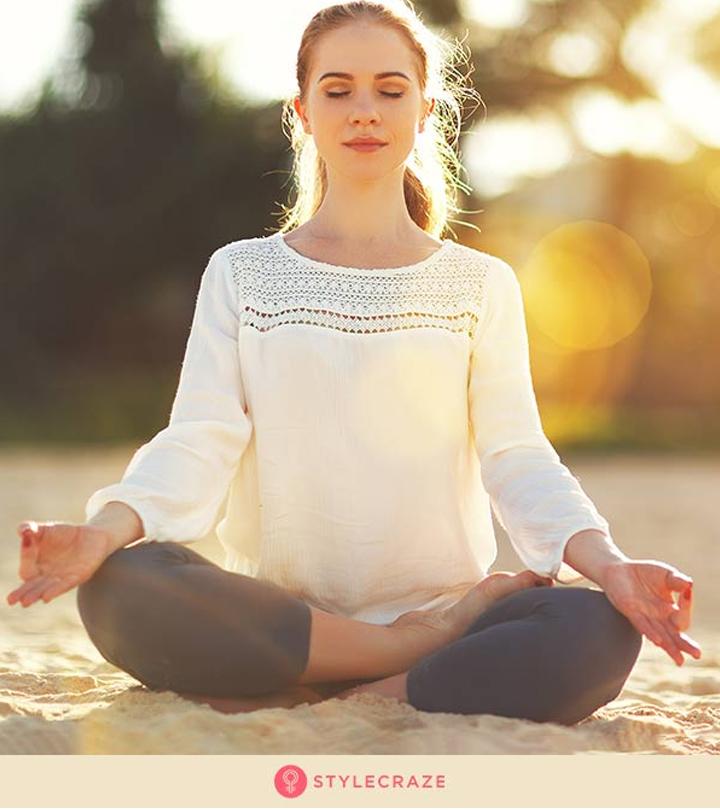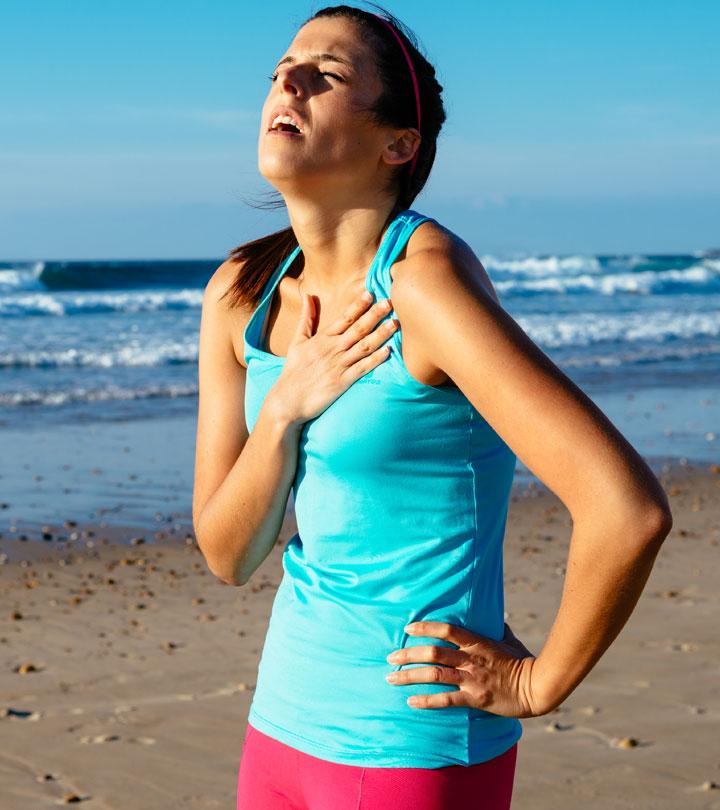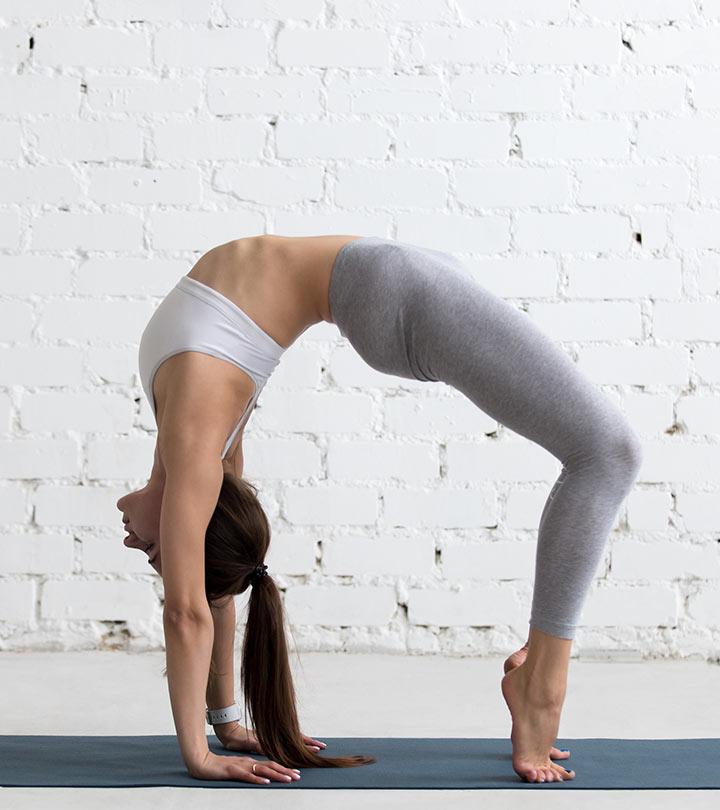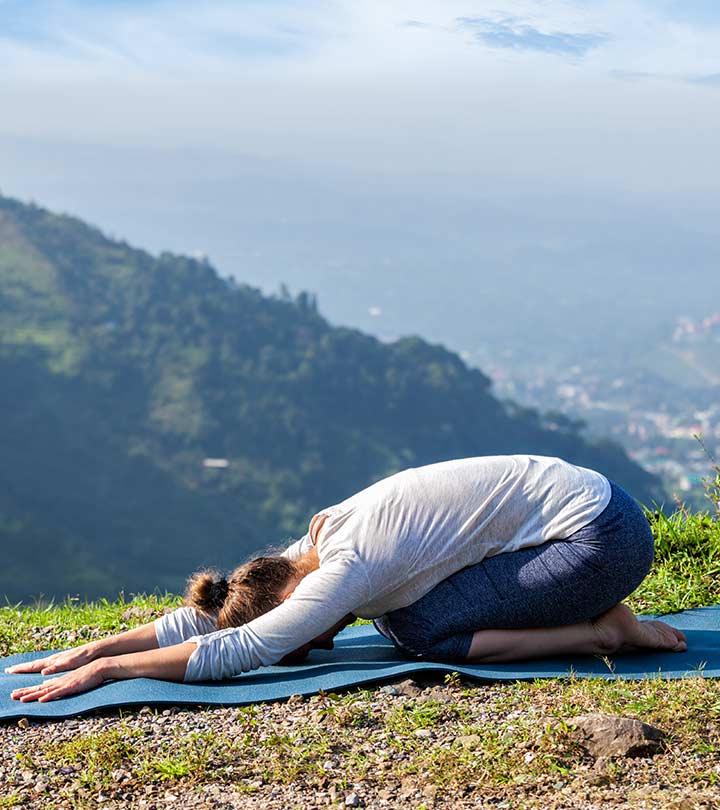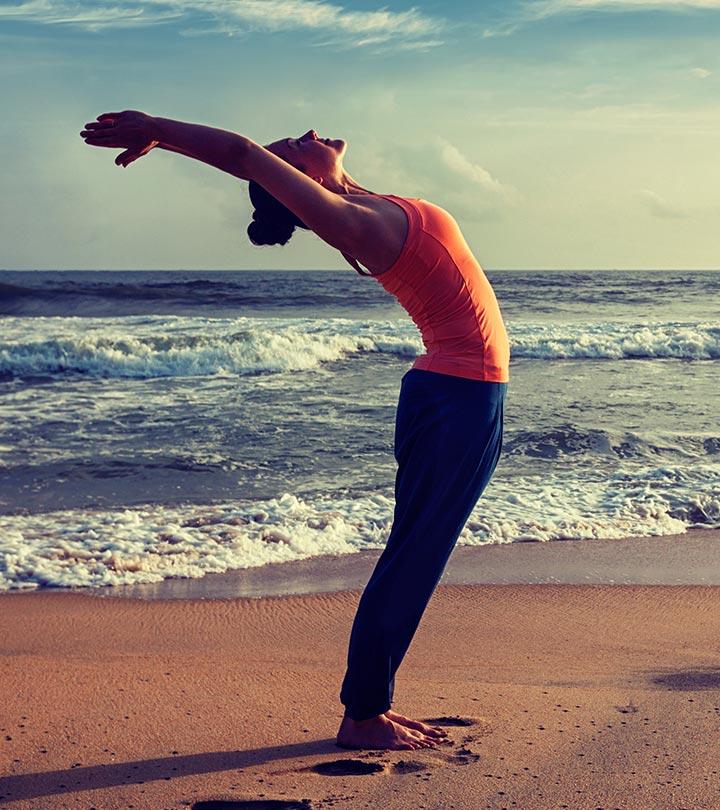7 Yoga Exercises For Concentration That Work Wonders
Improve your focus and function better with the help of some meditative poses.

Image: istock
If you are experiencing difficulty concentrating and an inability to focus, it is not a good sign. Thankfully, you can try out yoga for concentration! Wondering which yoga poses can help you keep your mind in a sound state? Well, this article brings you a list of seven effective yoga asanas, how to do them, and their overall benefits.
But before we go ahead, let us learn how yoga can improve your concentration. Scroll down!
In This Article
How Does Yoga Help To Improve Concentration?
Practicing yoga quiets your mind and keeps distracting thoughts at bay. Patanjali, the sage who compiled Yoga Sutras said, ‘yoga chitta vritti nirodha’, which means yoga reduces the fluctuations of your mind. It flushes out the emotional clutter in your head and helps you concentrate better.
The EAT 2018 Study gathered survey data from 1568 diverse young adults (81.2% non-white), finding that almost half of them had experienced adverse events such as abuse (43.9%) or discrimination (40.1%), which were linked to higher levels of stress. Surprisingly, young adults exposed to adverse events were equally or more likely to practice yoga than those without these exposures. This highlights the potential benefits of yoga for people living with high stress and underscores the need for affordable and accessible yoga outreach programs as a public health intervention.
Cecilia, a health and lifestyle blogger recounted how yoga helped her improve her focus, balance, and flexibility. She said, “By engaging my mind in this disciplined fashion several times a week, I enhance my concentration. By asking my body to work through a yoga practice, I increase my coordination. Together, I find I have improved balance (i).”
The ancient yogis believed in the magical powers of yoga and its potential to improve concentration. Later, research added authenticity to their claim with science and logic. In a recent experiment at the University of Illinois, a group of people was made to practice yoga daily for 20 minutes. And, viola! The results showed that the brain function had improved. Guess that’s enough to prove the claim, and now, it’s time to begin the actual practice. Following are some balancing asanas in yoga to improve concentration and attention. Check them out.
Yoga For Concentration – 7 Asanas That Simply Do Wonders
- Tadasana (Mountain Pose)
- Vrikshasana (Tree Pose)
- Garudasana (Eagle Pose)
- Natarajasana (Dancer Pose)
- Bakasana (Crane Pose)
- Ustrasana (Camel Pose)
- Paschimottanasana (Seated Forward Bend)
1. Tadasana (Mountain Pose)
Tadasana or the Mountain Pose is ther foundation pose for all asanas to follow. All the yoga poses that you assume branch out from the Tadasana, which is the base. Tadasana can be practiced anytime during the day, but if you are preceding or following it up with other asanas, make sure your stomach is empty, or there is a gap of two to three hours from your last meal. Tadasana is a basic level Hatha Yoga asana. Hold the pose for 10-20 seconds.
Benefits: Tadasana improves your posture and strengthens your legs. It helps with breath control and increases awareness. It relieves sciaticai XThe pain, numbness, or weakness in the sciatic nerve that originates in the spine and travels along the back of the leg. and reduces flat feet. Tadasana firms your abdomen and buttocks and strengthens and enhances the flexibility of your spine. The pose relieves tension and pain in your body. It expels dullness and refreshes you.
2. Vrikshasana (Tree Pose)
Vrikshasana or the Tree Pose is named so as the pose reminds you of a tree. It has the grace, stability, and humility of a healthy tree, which you imbibe while practicing it. Unlike many other asanas, Vrikshasana doesn’t require you to close your eyes while practicing it. Keep your eyes open during the pose and focus on an object ahead to maintain balance. Practice Vrikshasana early in the morning on an empty stomach and hold it at least for a minute. This asana is a beginner level Hatha Yoga pose.
Benefits: Concentration and time span go together. Although this pose is done standing on one leg, it can be endured only in combination of these two factors and helps in improving balance and stability. It builds self-confidence and esteem and helps you deal with life’s issues in a composed manner. It increases your stamina and stretches the entire body. It calms your nervous system and treats numbness.
3. Garudasana (Eagle Pose)
Garudasana or the Eagle Pose is an asana named after Garuda, the king of all birds and a vehicle of Lord Vishnu. Garuda has a unique place in Indian mythology, appearing in the Ramayana as a tough bird that tries to save Sita from Ravana. It is best when you practice this asana in the morning on an empty stomach. Garudasana is basic level Vinyasa Yoga asana. Hold the pose for 10-30 seconds.
Benefits: Garudasana strengthens the muscles of your legs and balances your body. It makes your hips and legs more flexible and restores neuromuscular coordinationi XThe ability of the central nervous system to control and coordinate muscles to perform a task unconsciously. . It corrects postural faults and releases the tightness exhibited with those having unstable SI joint issues.
 Quick Tip
Quick Tip4. Natarajasana (Dancer Pose)
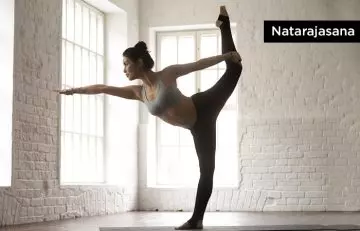
Natarajasana or the Dancer Pose is named after Nataraja, the dancing avatar of Lord Shiva. It is a challenging pose that takes time to perfect. Practice Natarajasana every day in the morning on an empty stomach. It works best when practiced at the crack of dawn. Natarajasana is an intermediate level Vinyasa Yoga asana. Hold the pose for at least 15-30 seconds.
Benefits: Natarajasana helps you reduce weight and improves digestion and metabolism. It strengthens your thighs, ankles, and chest and improves body flexibility. The pose firms your muscles and makes you strong. Natarajasana clears your head of depression and stress. It enhances blood circulation and is very rehabilitative for the spine.
5. Bakasana (Crane Pose)
Ustrasana or the Camel Pose is a backward bend that resembles a camel’s posture when it sits. Practice Ustrasana preferably in the morning on an empty stomach and clean bowels. And if that is not possible, exercising in the evenings too is fine, but make sure you have your meals four to six hours before practice. Make sure that the lumbar spinei XThe lower back region of the spine between the pelvis and chest area that contains five moveable vertebrae. is not being over used and instead try to attempt this posture through the thoracic regioni XThe middle section of the spine that starts at the base of the neck and ends at the bottom of the ribs. It is the longest region of the spine. of the spine. Ustrasana is a basic level Vinyasa Yoga asana. Once you assume the Ustrasana pose, hold it for at least 30-60 seconds.
Benefits: Bakasana increases your mental strength and endurance and strengthens your forearms. It tones your abdominal muscles and enhances the flexibility of your spine. Bakasana improves your mind-body coordination and removes tension and anxiety. It develops positive thinking, increases body awareness, and reduces acidity.
 Trivia
Trivia6. Ustrasana (Camel Pose)
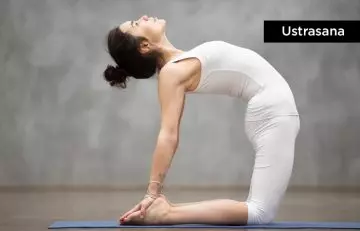
Ustrasana or the Camel Pose is a backward bend that resembles a camel’s posture when it sits. Practice Ustrasana preferably in the morning on an empty stomach and clean bowels. And if that is not possible, exercising in the evenings too is fine, but make sure you have your meals four to six hours before practice. Ustrasana is a basic level Vinyasa Yoga asana. Once you assume the Ustrasana pose, hold it for at least 30-60 seconds.
Benefits: Ustrasana strengthens and stretches your back and shoulders and improves your posture. It relieves backache and improves respiration, digestion, and excretion. It heals and balances your chakras and stimulates the endocrine glands. The pose takes care of your overall health. It reduces menstrual discomfort, activates your nerves, and reduces fat in the body.
7. Paschimottanasana (Seated Forward Bend)
Paschimottanasana is an easy forward bend that focuses on the back of your body. Practice the asana on an empty stomach and clean bowels, or in the evenings after a gap of four to six hours from your last meal. Digested food releases energy, which can be used to practice the pose. Paschimottanasana is a basic Hatha Yoga pose. Hold it for 30-60 seconds. Raw beginners may not be able to hold the feet initially. One can use a strap or a towel in case the hands do not reach the foot, but make sure to keep the spine as flat as possible while attempting this forward fold.
Benefits: Paschimottanasana is a stress reliever. It reduces anger and irritability and promotes inner peace and tranquility. It reduces constipation and stimulates your intestines and gall bladder. It cures stomach pain, headache, and piles. It strengthens your hip bones and stretches your shoulders. It activates your spinal nerves and energizes your body. The pose increases your appetite and reduces obesity.
Pranayama To Increase Concentration
Pranayama is a yogic breathing practice that aims at gaining control over the vital life force. Studies have shown that focusing on mindful breathing patterns draws attention away from physical and mental distractions (2). This can help improve concentration. Practice the following pranayama to improve your concentration:
- Sit in a relaxed position with your back straight and eyes closed.
- Inhale deeply through your nose for four counts.
- Hold for a second and exhale through tightened lips as if blowing through a straw. Breathe out for about eight counts.
- Pay attention to the way air moves in and out of your body. Envision your muscles relaxing from the tip of your head to your toes.
- Do this for 10-15 minutes whenever you feel overwhelmed and need to gather your senses.
Pair this breathing technique with the asanas mentioned above for better results.
Infographic: Boost Your Concentration With Yoga
Yoga not only keeps negative thoughts away, but it also improves your focus and concentration. By practicing a few yoga poses daily, you can quiet your mind and clear all the emotional clutter. Check out the infographic below to know the right yoga poses to follow to improve your concentration levels.

Illustration: StyleCraze Design Team
Yoga poses for concentration can do wonders. It can promote mental discipline and significantly improve your mental health and ability to cope with stressful situations. Yoga helps to calm the mind, promotes mindfulness, and keeps distracting ideas at bay. Deep concentration needs one to focus. The yoga asanas mentioned above can improve your concentration levels and ability to focus. They balance your breathing, increase self-awareness, and build self-confidence and esteem in you. In addition, they provide mental clarity and promote relaxation and ain in stress reduction. So why not give it a try and improve the quality of your life? Grab your yoga mat and get started today.
Now, that you know what to do to increase your concentration, let’s answer some questions regarding yoga.
Frequently Asked Questions
Is there an age limit to practice yoga?
It is best to begin yoga practice from 12 years of age and continue till your body permits to do so.
Do we have to be religious to practice yoga?
You don’t have to be religious to practice yoga. You should have faith in the practice, and that’s all you need.
What exercises improve concentration and focus?
Concentration techniques like meditation and activities that require memorization, visualization, and recollection may help improve concentration and focus.
What causes forgetfulness and lack of concentration?
Inadequate diet, sleep deprivation, chronic stress, and certain medications may lead to forgetfulness and lack of concentration.
Which mudra increases concentration?
Gyan mudra may help boost memory and concentration. It also helps reduce stress and anger levels (1).
Key Takeaways
- Do the mountain pose to improve your posture and strengthen your legs.
- Try the eagle pose to relieve tightness in the body and help ease your joint issues.
- Enhance your arm muscles and mental strength by doing a crane pose.
- Regular yoga sessions can improve your blood circulation, memory, creativity, and cognitive functioning.
Yoga is a great way to improve concentration and reduce anxiety. Watch this insightful video to learn five simple poses to help you stay focused and relaxed.
Personal Experience: Source
StyleCraze's articles are interwoven with authentic personal narratives that provide depth and resonance to our content. Below are the sources of the personal accounts referenced in this article.
i. Yoga: ‘me’ time, but who am I?https://telostherapy.blogspot.com/2011/08/yoga-me-time-but-who-am-i.html
References
Articles on StyleCraze are backed by verified information from peer-reviewed and academic research papers, reputed organizations, research institutions, and medical associations to ensure accuracy and relevance. Read our editorial policy to learn more.
- Effect of yoga mudras in improving the health of users: A precautionary measure practice in daily life for resisting the deadly COVID-19 disease
https://www.ncbi.nlm.nih.gov/pmc/articles/PMC9347266/ - Exploring the Therapeutic Benefits of Pranayama (Yogic Breathing): A Systematic Review
https://www.ncbi.nlm.nih.gov/pmc/articles/PMC7336946/





